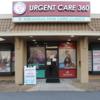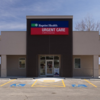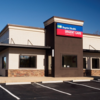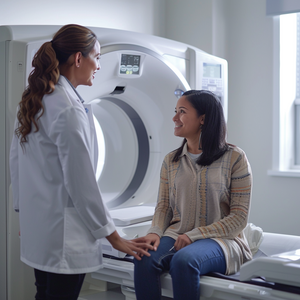Pediatric Urgent Care
in Arkansas
Own a clinic? Add your location.
Help patients book appointments with you on Solv. It's free!
15 instant-book locations

Baptist Health Urgent Care, Little Rock
Baptist Health Urgent Care

Urgent Care 360
Urgent Care 360

Baptist Health Urgent Care, Little Rock (W. Markham St.)
Baptist Health Urgent Care

Baptist Health Urgent Care, Little Rock (West)
Baptist Health Urgent Care

Baptist Health Urgent Care, N. Little Rock
Baptist Health Urgent Care

Baptist Health Urgent Care, Jacksonville
Baptist Health Urgent Care

Baptist Health Urgent Care, Bryant
Baptist Health Urgent Care

Baptist Health Urgent Care, Benton
Baptist Health Urgent Care

Baptist Health Urgent Care, Cabot West
Baptist Health Urgent Care

Baptist Health Urgent Care, Cabot
Baptist Health Urgent Care

Sherwood Urgent Care, Lonoke
Sherwood Urgent Care

Baptist Health Urgent Care, Conway
Baptist Health Urgent Care

Baptist Health Urgent Care, Conway (Oak St.)
Baptist Health Urgent Care

Baptist Health Urgent Care, Conway (North)
Baptist Health Urgent Care

Baptist Health Urgent Care, Beebe
Baptist Health Urgent Care

Baptist Health Urgent Care, North Little Rock (JFK)
Baptist Health Urgent Care

Concentra Urgent Care, North Little Rock
Concentra Urgent Care
BMHC Pediatric Urgent Care
BMHC Pediatric Urgent Care

MedExpress Urgent Care, Little Rock
MedExpress Urgent Care

Concentra Urgent Care, Little Rock Southwest
Concentra Urgent Care
Own a clinic? Add your location.
Help patients book appointments with you on Solv. It's free!
Arkansas Pediatric Urgent Care
Convenience is important these days, especially for parents with young children. In a world when 'next day delivery' is being beaten by'same day shipping,' who wants to wait several weeks to visit their pediatrician or primary care physician? There are several types of walk-in clinics, including urgent care, pediatric urgent care, retail clinics, and others. These handy locations offer same-day access to qualified pediatric providers who can diagnose and treat a variety of minor injuries and illnesses in children aged 6 to 18. If you've ever wondered, "Where can I find a walk-in clinic near me?" you've come to the right place.
The last thing you want to do when your children require immediate medical attention is travel to a nearby urgent care facility.
Urgent Care Guide for Kids
In a recent survey conducted with the Urgent Care Association, Solv observed that patients were waiting an average of 24 days for appointments with their primary care provider. In today's world of instant satisfaction, consumers expect more. They need it right now. If you want to see a movie right away, you can either download it or stream it. If you need groceries quickly, you can call and have them delivered within an hour. If you need to make a restaurant reservation, simply look for one that has openings, book online, then go in to seat down minutes later. There should be no exemption in the case of healthcare.
As a result, pediatric urgent care in the United States has increased at a faster rate than any other type of healthcare. It's also why healthcare customers search for "urgent care" more than 5 times more than "primary care" or "family doctor" combined. These customers are highly motivated, seeking for "urgent care near me" with zeal. People want same-day access to great healthcare providers whether they are sick or injured - after hours, on weekends, and on holidays - without the cost and inconvenience of visiting to the emergency room.
Non-emergent healthcare needs, such as the flu, sinus infections, and strep throat, as well as injuries, such as bone fractures and sprains, wounds, scratches, and burns, can be detected and treated at urgent care clinics. In addition, urgent care clinics are increasingly providing preventative care services such as annual physicals and well visits, flu shots, and other immunizations and vaccines, effectively filling the function of primary care physician for the tens of millions of individuals who lack one.
There are specific pediatric urgent care clinics for children aged one to eighteen years old, which are usually open after hours for patients aged one to eighteen years old.
Urgent Care Services & Pricing
Urgent care clinics, which are part of the walk-in clinic healthcare category, are a good option for consumers seeking treatment for minor illnesses and accidents. An urgent care clinic typically provides annual and school physicals, flu shots and immunizations, and treatment for ailments such as colds, flu stomach aches, sinus and ear infections, and more. You can also be treated for injuries such as burns, bites, sprains, and breaks, which you might believe should be taken to an emergency room rather than urgent care, but you'll wait less and pay less at urgent care. If you don't have insurance, your appointment should cost between $100 and 140 dollars, not counting transportation.
- What services does urgent care provide?
- How much does urgent care cost?
- 5 mistakes to avoid at the urgent care
Insurance & Payments
Almost every urgent care facility accepts commercial insurance, and many (if not all) of them also accept Medicare. As a result, if you have insurance, the financial experience will be similar to seeing a specialist, where you will be charged a co-pay, which is typically $35-50, at the time of the visit. Any further lab work, x-rays, or other tests will be billed to your insurance first, with any remaining balance payable to you later. If you don't have health insurance, you'll have to pay a $100-140 visit fee at the time of your appointment. If you're considering a telehealth or video visit, expect to pay between 25 and 50 percent more than you would with your primary care provider, but the convenience is generally well worth the extra money.
- Is urgent care covered by insurance?
- Do urgent care centers accept medicare?
- Navigating urgent care without insurance
Urgent Care Hours & Wait Times
Different urgent care locations, even within the same group or brand, may have different hours. While they're meant to be useful when your primary care physician isn't available, this is a highly subjective and variable assessment. An urgent care, on the other hand, is normally open 6 to 7 days a week, from 8 a.m. to 8 p.m., according to a regular formula. Between the hours of 7 a.m. and 10 p.m., this might be any 8-12 hour period. Some clinics are even open 24 hours a day, similar to emergency rooms. In terms of wait time, most patients say they have to wait between 15 and 45 minutes on average, though this varies. It's usually better to choose a nearby urgent care center.
Urgent Care Guide for Kids
In a recent survey conducted with the Urgent Care Association, Solv found that patients were waiting an average of 24 days for appointments with their primary care provider. In a world of instant gratification, consumers demand more. They demand now. If you want to watch a movie, you download it in minutes or stream it instantly. If you need groceries, you can pick up your phone and have them delivered to you within the hour. If you need restaurant reservations, you find one with availability, book online, walk in minutes later and sit right down. Healthcare shouldn’t be any different.
That’s why pediatric urgent care has been growing at a faster pace than any other healthcare service in the United States. And it is why healthcare consumers search for “urgent care” more than 5x more than “primary care” or “family doctor,” combined. These consumers are highly actionable, searching with high intent terms like “urgent care near me.” They want same day access to quality healthcare providers when they are sick or injured - after hours, one weekends and on holidays - without the cost and inconvenience of the emergency room.
Urgent care centers typically treat minor illnesses like the flu, sinus infections and strep throat, as well as injuries like bone fractures and sprains, cuts, scrapes and burns, making these clinics ideal for diagnosing and treating non-emergent healthcare needs. And at a growing rate urgent care clinics are offering preventative care services including annual physicals and well visits, flu shots and other immunizations and vaccines, taking on the role of primary care provider for the tens of millions of consumers that don’t have one.
For kids there are special pediatric urgent care centers, usually open after hours for patients between the ages of 1 and 18.
Urgent Care Services & Pricing
Urgent care centers, which are part of the walk-in clinic healthcare category, are a convenient resource for consumers needing treatment for minor illnesses and injuries. Services that you would normally receive at your primary care office are usually available at an urgent care including annual and school physicals, flu shots and immunizations, treatment for illnesses including colds, flu stomach pains, sinus and ear infections and more. You can also be seen for injuries such as burns, bites, sprains and breaks - things that you might first thing to go to the emergency room vs urgent care, but you’ll have a shorter wait and smaller bill at the urgent care. As for cost, without insurance, you should expect between $100-140 for your visit, plus the cost of any labs, tests or images. With insurance, urgent care will be similar to seeing a specialist with applicable co-pay.
- What services does urgent care provide?
- How much does urgent care cost?
- 5 mistakes to avoid at the urgent care
Insurance & Payments
Nearly all urgent care centers take commercial insurance and many (if not most) will take medicare. As such if you have insurance coverage, you can expect the financial experience to be similar to visiting a specialist where you have a co-pay, usually $35-50, due at the time of the visit. Any additional lab work, x-rays or other tests performed will be billed against your insurance first and any supplemental balance due will be invoiced to you after the fact. Without insurance, you’ll pay a visit fee between $100-140 at the time of your visit. This is typically 25-50% more than your primary care provider, but usually the convenience is well worth the additional cost. If you are interested in a telehealth or video visit, your cost could be as much as 50% less than an urgent care, you could be diagnosed and prescribed medication and you’ll never have to leave your home.
- Is urgent care covered by insurance?
- Do urgent care centers accept medicare?
- Navigating urgent care without insurance
Urgent Care Hours & Wait Times
Every urgent care center - even those part of the same group or brand - may have different hours. While they are meant to be conveniently accessible during times when your primary care provider is not, that’s subjective and highly variable. A traditional formula, however, is that an urgent care is open 6 to 7 days a week usually between the hours of 8 am to 8 pm. That could shift to nearly any 8-12 hour period between 7 am and 10 pm. You’ll even find some clinics open 24 hours a day, similar to an emergency room. As for wait time, most patients report waiting between 15-45 minutes on average, but that can certainly vary, as well. It’s usually best to find an urgent care near you to either confirm the hours online, or call the clinic directly to verify. Or, you can book a same day doctor appointment online with Solv.
Pediatric Urgent Care FAQs
How much does a pediatric urgent care visit cost in Arkansas?
Urgent care can cost anything from $75 to $150, depending on the clinic's location. Of course, this only applies to cash-paying patients. The quality and standards of healthcare, on the other hand, are consistent across the board. Most institutions, on the other hand, would charge between $100 and $125 for non-covered services. Keep in mind, however, that this is just the beginning of the fundamental therapies offered by urgent care facilities. Medication and immunization shots, lab testing, and X-rays are not included in the package. Stitches, sprains, and broken bones will all increase the expense of emergency treatment. Even patients with insurance will be compelled to pay co-payments rather than having their insurance company cover the entire cost. Payments are made in
Is insurance accepted at urgent care centers in Arkansas?
Insurance companies decide whether or not to pay for emergency medical care. It is possible that a patient's insurance will not cover the costs. The urgent care center will only accept cash in that case. In most cases, however, insurance companies would cover urgent care, allowing people to visit a medical facility without having to pay a large sum of money. An urgent care center may refuse to accept this type of care even if your insurance policy covers it, but this is exceedingly rare. As a result, calling ahead and double-checking before visiting a care facility is always a smart idea.
What are common services of a pediatric urgent care in Arkansas?
You may be concerned that your child is sicker than normal, but this is not the case. The truth is that children will get sick, especially after they enter school and their immune systems are exposed to the health risks that come with crowded environments. Colds, flu, strep throat, ear and sinus infections, pink eye, and pneumonia are just a few of the illnesses that can be treated in a pediatric urgent care facility near you. Pediatric urgent care clinics can also treat stings and bug bites, allergic reactions, wounds and burns, swallowed items, sprains, and fractured bones in addition to traumas.
What Is the difference between an urgent care and the emergency room?
The patient experience is the most significant contrast between a pediatric urgent care center and an emergency room. In an emergency room, the typical wait time is roughly two and a half hours. A pediatric urgent care center, on the other hand, can see the child in 15 to 45 minutes. Another important distinction is the expense of an urgent care facility versus an emergency department. The former is usually a fraction of the cost of the latter. If a patient has a significant health emergency, they should go to an emergency department rather than an urgent care center. Because urgent care centers are exclusively for non-emergent and minor diseases, as well as minor injuries, this is the case.
What is the difference between pediatric urgent care and regular urgent care?
The patient experience is the key contrast between a pediatric urgent care facility and an emergency room. In an emergency room, the average wait time is about two hours and fifteen minutes. The patient, on the other hand, will be treated in a pediatric urgent care clinic in 15-45 minutes. Another important distinction is the expense of an urgent care center vs an emergency department. The former is frequently far less expensive than the latter. In the event of a serious health emergency, patients should go to an emergency department rather than an urgent care center. Because urgent care clinics are only for non-emergent and minor illnesses and injuries, this is the case.
What is pediatric urgent care?
Typically, pediatric urgent care operators collaborate with traditional physicians, the majority of whom are available during regular office hours (e.g. from 9 am - 5 pm Monday to Friday). Late-night pediatric situations that might usually demand a trip to the emergency room are handled by these medical specialists. Pediatric urgent care centers treat both minor and significant ailments in children. They are frequently open till midnight and on weekends, even when conventional pedestrians are closed. These children's doctors, without a doubt, save parents from unnecessary and traumatic trips to the emergency room.
10 Ways to Keep Your Kids Out of the Urgent Care
There are a variety of ways to keep children healthy and avoid health problems and emergencies. Simple precautions such as hand washing, regular water, and adequate sleep can help protect children's health. Many diseases can be avoided in toddlers by eating a well-balanced diet, managing stress, getting the necessary vaccines, and avoiding smokers.

Updated on Jan 25, 2025
Related searches
Chickenpox Vaccine in Arkansas
DOT Exam in Arkansas
Ear Wax Removal in Arkansas
Flu Shot in Arkansas
Hepatitis Vaccine in Arkansas
Measles Vaccine (MMR) in Arkansas
Physical Exam in Arkansas
Shingles Vaccine in Arkansas
Sports Physicals in Arkansas
Tetanus Shot in Arkansas
Typhoid Vaccine in Arkansas
Yellow Fever Vaccine in Arkansas
A1C Test in Arkansas
Allergy Testing in Arkansas
Basic Metabolic Panel in Arkansas
Blood Test in Arkansas
CMP Test in Arkansas
COVID-19 Antibody Test in Arkansas
Cholesterol Test in Arkansas
Diabetes Test in Arkansas
Drug Test in Arkansas
Glucose Test in Arkansas
Hepatitis test in Arkansas
Mono Test in Arkansas
RSV Test in Arkansas
STD Testing in Arkansas
Strep Test in Arkansas
TB Test in Arkansas
Urinalysis in Arkansas
Vitamin D Test in Arkansas
Everyday Healthcare, Simplified
Expert advice to help you live your best life









